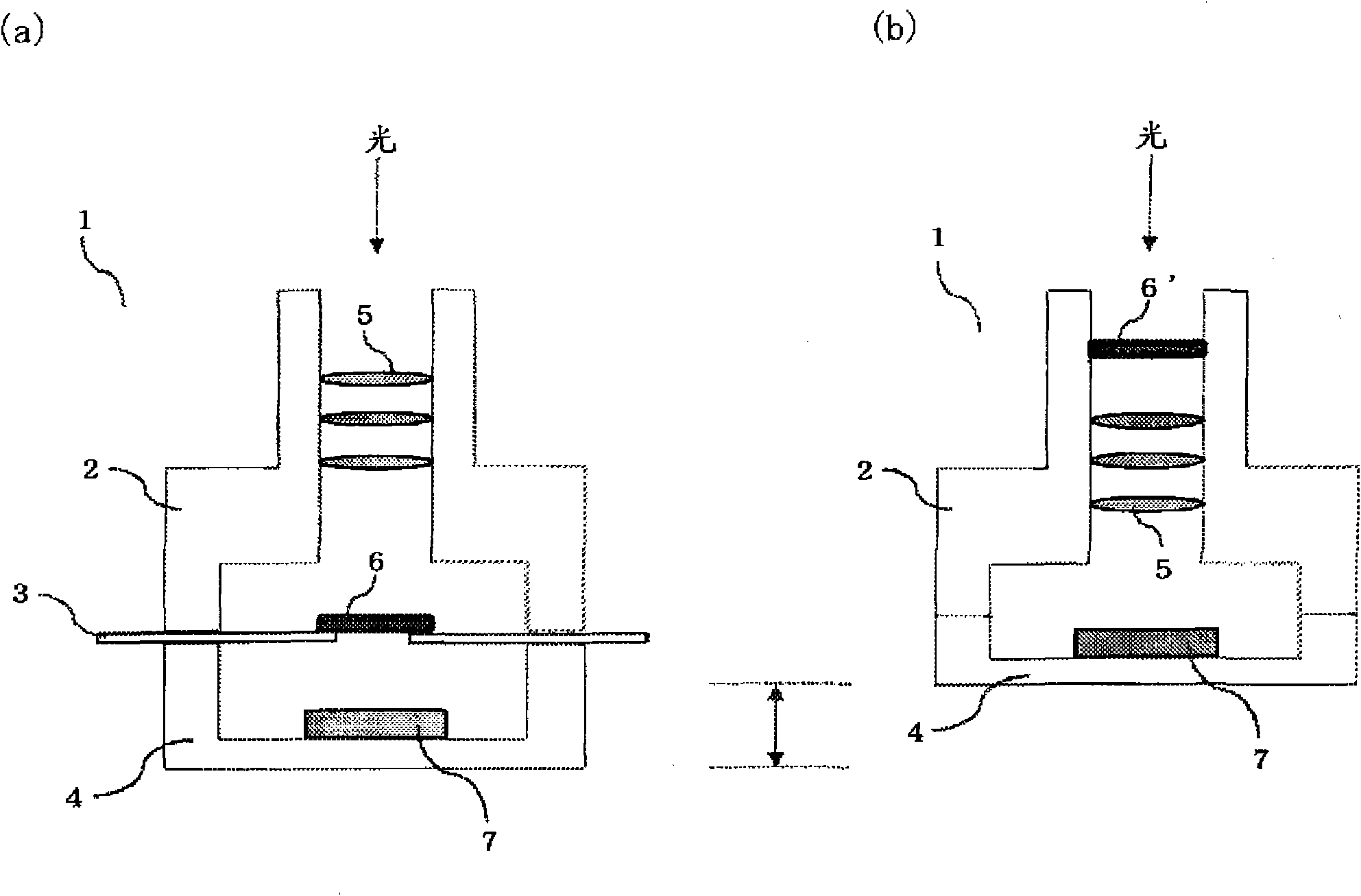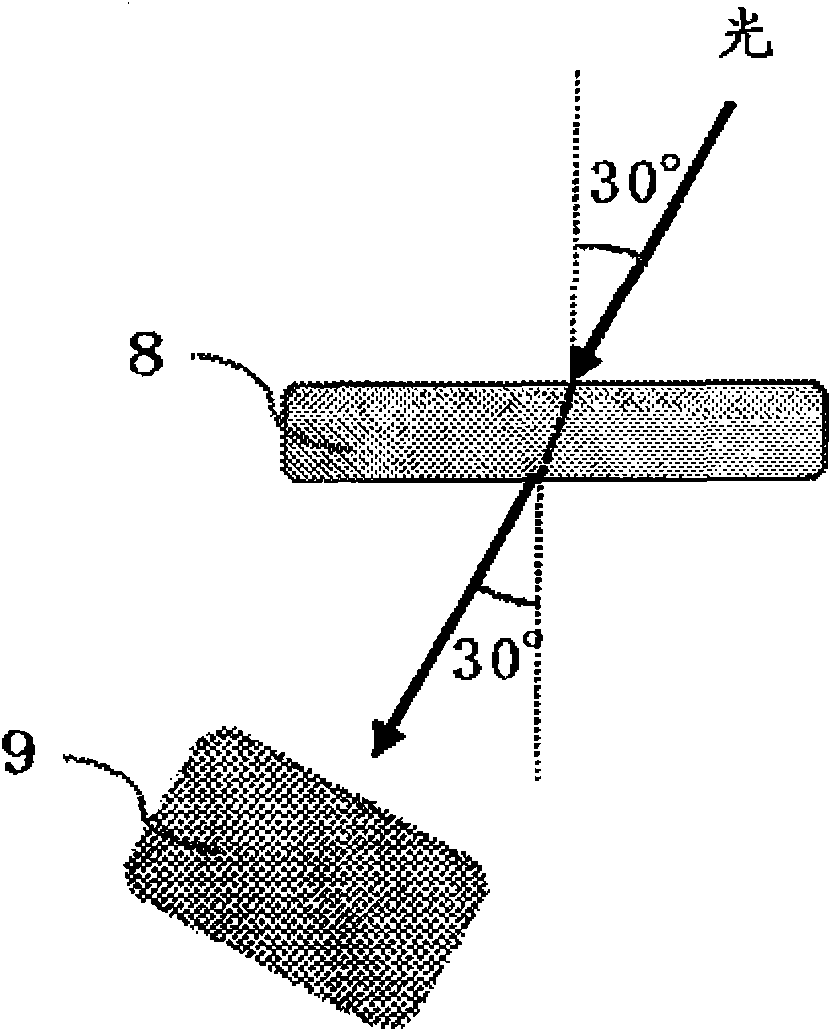Near infra red cut filter, and device comprising the same
A cut-off filter and near-infrared technology, which is applied in the direction of photographic filters, instruments, filters, etc., can solve the problem of not being able to obtain sufficient viewing angle values, and achieve the effect of small incidence angle dependence and wide viewing angle
- Summary
- Abstract
- Description
- Claims
- Application Information
AI Technical Summary
Problems solved by technology
Method used
Image
Examples
Embodiment
[0259] Hereinafter, although an Example demonstrates this invention, this invention is not limited at all by these Examples. In addition, "part" and "%" mean "part by weight" and "% by weight" unless otherwise indicated.
[0260] First, the measurement method of each physical property value and the evaluation method of a physical property are demonstrated.
[0261] (1) Molecular weight:
[0262] Using a Gel Permeation Chromatography (GPC) device (Model 150C) manufactured by WATERS Corporation equipped with an H-type column manufactured by TOSOH, under the conditions of o-dichlorobenzene solvent and 120°C, the weight in terms of standard polystyrene was measured. Average molecular weight (Mw) and number average molecular weight (Mn).
[0263] (2) Glass transition temperature (Tg):
[0264] Using a differential scanning calorimeter (DSC6200) manufactured by Seiko Instruments, the measurement was performed at a rate of temperature increase: 20° C. per minute, under a nitrogen ...
Synthetic example 1
[0273] The 8-methyl-8-methoxycarbonyltetracyclo[4.4.0.1 shown in the following formula (2) 2,5 .1 7,10 ] 100 parts of dode-3-ene (hereinafter also referred to as "DNM"), 18 parts of 1-hexene (molecular weight modifier), and 300 parts of toluene (solvent for ring-opening polymerization reaction) were charged to the nitrogen-substituted reaction In a container, the solution was heated to 80°C. Next, 0.2 parts of a toluene solution (0.6 mol / L) of triethylaluminum as a polymerization catalyst and 0.9 parts of a toluene solution (concentration 0.025 mol / L) of methanol-modified tungsten hexachloride were added to the solution in the reaction vessel. The ring-opening polymerization reaction was performed by heating and stirring the solution at 80° C. for 3 hours to obtain a ring-opening polymer solution. The polymerization conversion rate of this polymerization reaction was 97%.
[0274]
[0275] 1000 parts of the ring-opening polymer solution obtained in this way are packed in...
Synthetic example 2
[0278] Sufficiently carry out drying, and in the 1L stainless steel reaction vessel that is replaced with nitrogen, the water content of 6ppm dehydrated cyclohexane 420.4g, p-xylene 180.2g, 5-trimethoxysilyl-bicyclo[2.2. 1] 48.75 mmol (10.43 g) of hept-2-ene, 1425 mmol (134.1 g) of bicyclo[2.2.1] hept-2-ene, and charged with gaseous ethylene so that the internal pressure of the reactor reached 0.1 MPa.
[0279] The reactor was heated to 75°C, and 0.003 milligram atoms of 2-ethylhexanoic acid palladium (as Pd atom) and 0.0015 mmol of tricyclohexylphosphine were reacted in 10 ml of toluene at 25° C. for 1 hour as a catalyst component to obtain a solution. The entire amount of the obtained solution and 0.00315 mmol of triphenylcarbenium pentafluorophenylborate were added in this order to start polymerization.
[0280] 90 minutes after the start of polymerization, 11.25 mmol (2.41 g) of 5-trimethoxysilyl-bicyclo [2.2.1] hept-2-ene was added, and then 7.5 mmol (1.61 g), 3.75 mmol (...
PUM
 Login to View More
Login to View More Abstract
Description
Claims
Application Information
 Login to View More
Login to View More - R&D
- Intellectual Property
- Life Sciences
- Materials
- Tech Scout
- Unparalleled Data Quality
- Higher Quality Content
- 60% Fewer Hallucinations
Browse by: Latest US Patents, China's latest patents, Technical Efficacy Thesaurus, Application Domain, Technology Topic, Popular Technical Reports.
© 2025 PatSnap. All rights reserved.Legal|Privacy policy|Modern Slavery Act Transparency Statement|Sitemap|About US| Contact US: help@patsnap.com



